During the run of my exhibition at Northlight Gallery in Stromness I’ve been inviting people to come and join me in creating a giant drawing that’s grown over the last two weeks, like a tide slowly creeping in, made of hundreds of thousands of tiny circles.
Each time I’ve invited someone to sit with me and draw, I have seen the same process unfold: at first, awkwardness, resistance, self-consciousness, perhaps even claims that ‘I can’t draw’…
Then, if I offer a pen and explain how simple it is to do, a tentative curiosity. ‘Oh, just one circle then.’
They sit, with some commotion and shuffling perhaps, and begin to draw. A moment of silence…followed by, ‘Oh, this is quite addictive isn’t it!…’
Within a few minutes, a change of energy occurs. I can feel them coming into a kind of calm focus as they settle into a quiet rhythm of drawing. And even though I am quite shy, really, and so are some of my visitors, we soon find an easy conversation begins to flow, a gentle connection forming around this simple, shared task. We don’t rush to fill silences but allow them to ripen until a thought or observation arises that needs to be shared.
It’s been a delight, really. And the fact that this process is generating a beautiful drawing is just an added bonus really. Here it is so far…
We reach the end of the exhibition’s run in the gallery later today, but I know this drawing will continue. I don’t know how big it will get, how many more collaborators I’ll find, how long I will keep it going for, or where or when it might be exhibited again, but I do know that there is a deep, quiet joy to be found in repetition.
I have written about this idea before, and forgive me if you’ve been a reader of my newsletters for a while. Because the creative potential of repetition…well…bears repeating. And I’m not the only one who thinks so.
I’ve been listening to downloads of BBC Radio Three ‘Night Tracks’ a lot while drawing in the gallery, and the other day I listened again to a recording of a live performance of a piece by the composer Gavin Bryars called “Jesus Blood”.
This is a work that’s grounded in repetition. For 25 minutes a short loop plays on repeat, the voice of an old homeless man singing the refrain from a tune that sounds like it might be a hymn, though nobody knows the source. There’s a sharp poignancy in this voice of a man who is clearly elderly, frail and so destitute he is sleeping rough, yet singing with such quiet certainty that “Jesus’ blood never failed me yet”. The voice cracks a little and the old man’s breath whistles in his lungs, but nonetheless he holds his pitch true and sings with heartfelt faith, even joy. It’s a haunting sound of resilience and hope against the odds. The singer’s identity has sadly been lost, but here he is as vivid and stoic as a tramp in a Samuel Beckett play.
Performances vary, but in this recording the piece begins very quietly, imperceptible at first, a single, quavering voice rising out of the ambient hiss of the archive field recording. Softly, the orchestra comes in and little by little wraps the old man’s voice in quiet strings and gently lifts it up. This slowly gives way to a brass band that pours over the whole thing like warm gravy, like the very sound of kindness, before receding to leave the old man’s voice trailing off into silence.
The piece has become part of the canon since its first performance in 1971. And rightly so, because within that seemingly endless repetition of a single phrase of music, we listeners are offered a space to pause and let whatever wordless, awkward yearning or hope or sadness take form within us and allow it to be held, just as it is, for a few minutes.
Visual repetition offers us a similar space of quietness. A writer and maker I very much admire, Edmund de Waal, posted on his instagram about some work he made a few years ago that also involved repetition. ‘Porcelain Room’ is now in a private collection but it was first installed in 2001 in the Geoffrey Museum. It comprises 650 celadon glazed porcelain vessels arranged in neat rows.
It’s a beautiful, calm and contained piece of work. It must be a joy to live with, though I wouldn’t want the dusting of it.
And then I came across a mention of another artist whose work I admire, the American sculptor Tara Donovan. Her handmade assemblages are often built from mundane materials like drinking straws, polystyrene cups, masking tape, toothpicks, or, as here, a million index cards. Again, through repetition and accumulation something happens that transcends the simple, single form.
I’m also a big fan of the painter Agnes Martin’s work and life, and her use of repetitive grids and lines, but that’s a whole other post. You can read it after this one if you like.
Meanwhile, the composer John Cage, famously suggested that:
If something is boring after two minutes, try it for four. If still boring, then eight. Then sixteen. Then thirty-two.
In an interview from 1985 he elaborates further:
Schönberg said that everything is repetition – even variation. On the other hand we can say that repetition doesn’t exist, that two leaves of the same plant are not repetitions of each other, but are unique. Or two bricks on the building across the streets are different. And when we examine them closely, we see that they are indeed different in some respect, if only in the respect how they receive light, because they are at different points in space. In other words, repetition really has to do with how we think. And we can’t think either that things are being repeated, or that they are not being repeated. If we think that things are being repeated, it is generally because we don’t pay attention to all of the details. But if we pay attention as though we were looking through a microscope to all of the details, we see that there is no such thing as repetition.
As the philosopher Henri Bergson has also said, boredom is really a sign of distraction. If we were really paying attention to the world and our experience of it, we would see that nothing ever repeats in quite the same way, not least because we ourselves are different in every moment.
It’s fair to say that my way of making art is pretty repetitive. It’s slow and painstaking work. But there’s something steadying about the rhythm of a repetitive process, as the visitors who have spent time drawing with me this week have also discovered.
In this creative process, each decision is small and incremental and often made more by feel and instinct. Once you’ve set off there’s not much you can do but just trust the process, keep going, and see how it turns out at the end. This is similar to the way complex natural forms emerge from simple beginnings; think corals, trees, lungs, mollusc shells, clouds.
At the end of today the drawing will be rolled up and put away, for now. But I do hope to bring it out again.
Because, as Prince sang: ‘There’s joy in repetition’.
[Repeat to fade]
Sam


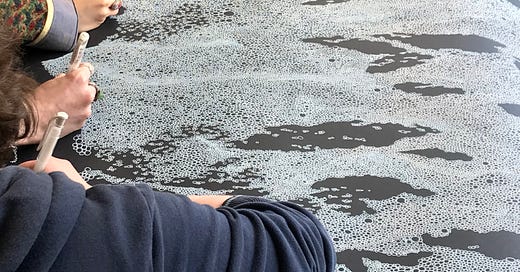



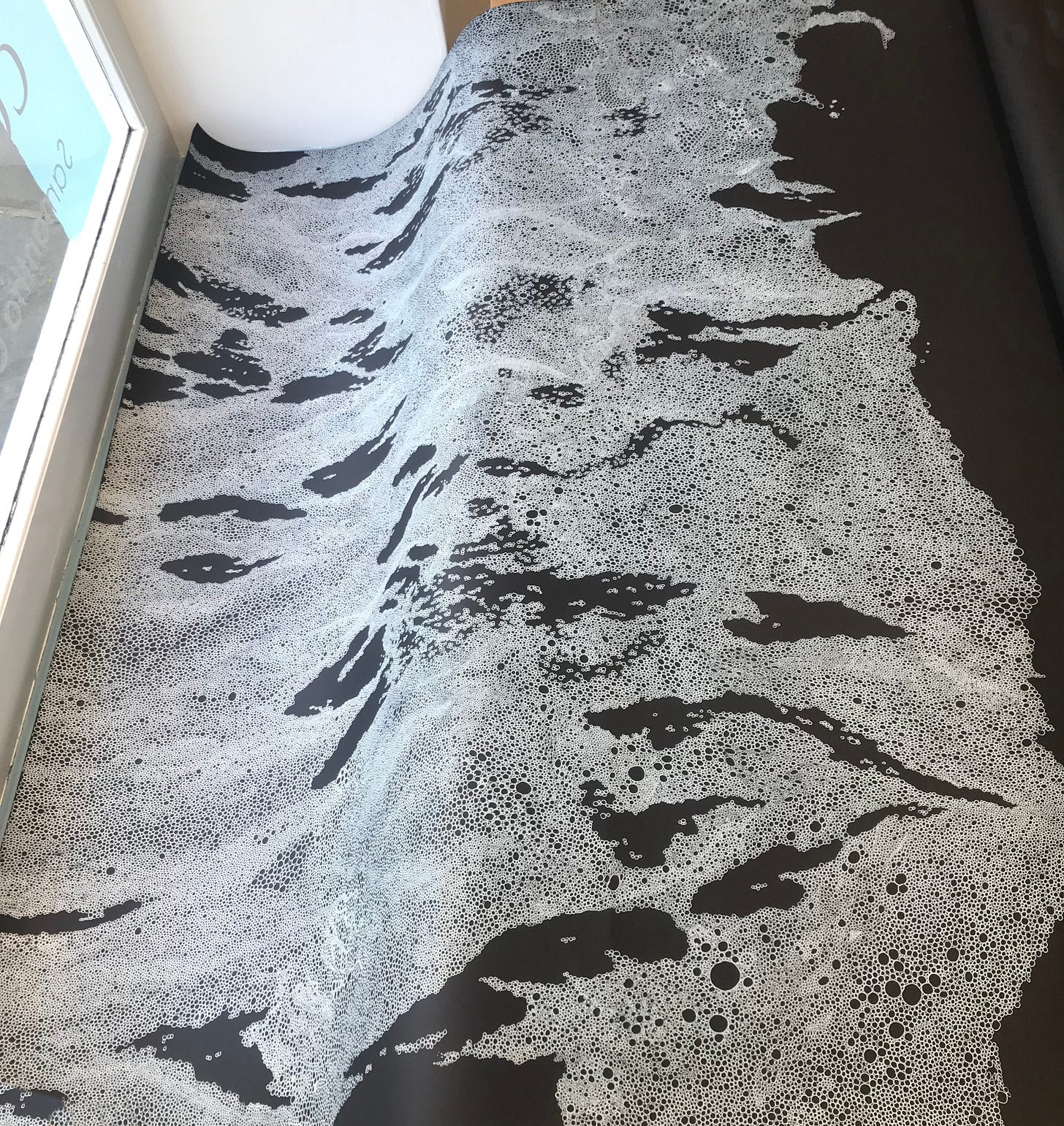
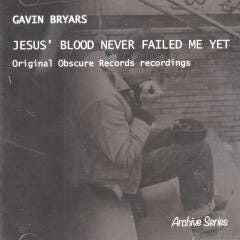
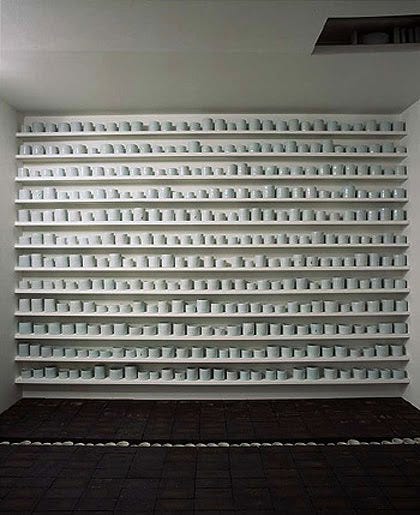
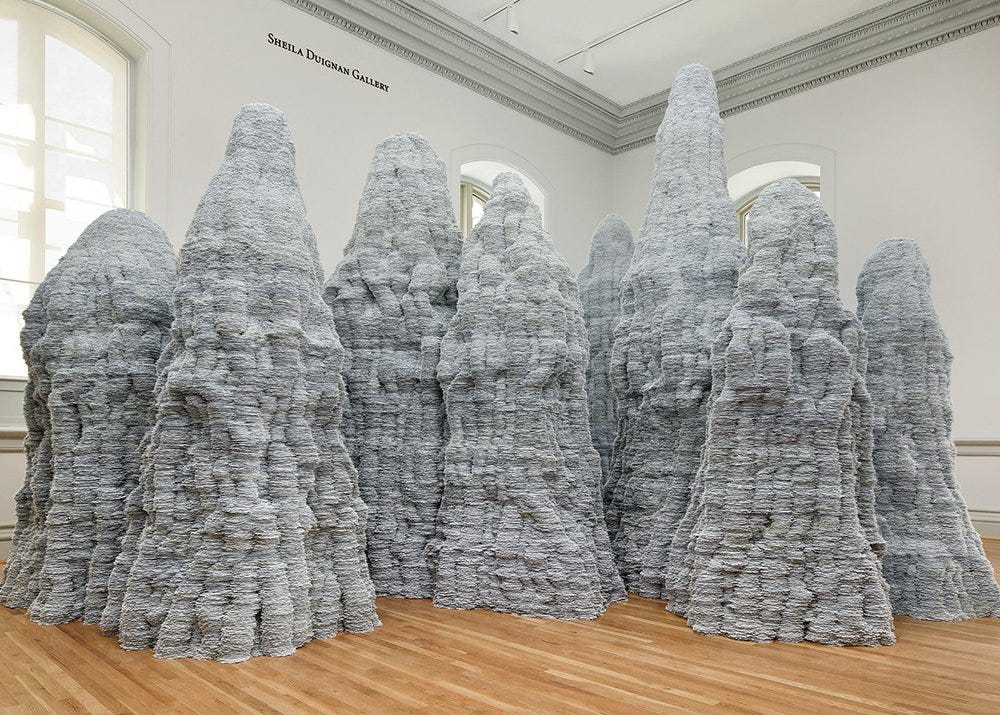



What a wonderful few moments it has been following your links. Confluence is utterly gorgeous, it’s alive, a moment on a beach after the storm has passed but the bubbles are still washing up on the tide. I feel an almost spiritual link to your patient, inspirational, beautiful work.
Wonderful post Sam, which I’ve only seen now. Ever since reading poet Glyn Maxwell’s book, On Poetry’, I’ve borrowed his line in my teaching that ‘there’s no such thing as repetition’ in poetry. He illustrates his claim with, among others, Frost’s repeated lines in the closing couplet, ‘And miles to go before I sleep’ and follows with that heart-rending cry of Shakespeare’s King Lear, ‘never, never, never, never, never’.
I love how you send out these beautiful and thoughtful missives.